If You Can Hold These 3 Planks, Your Core Strength Is Elite
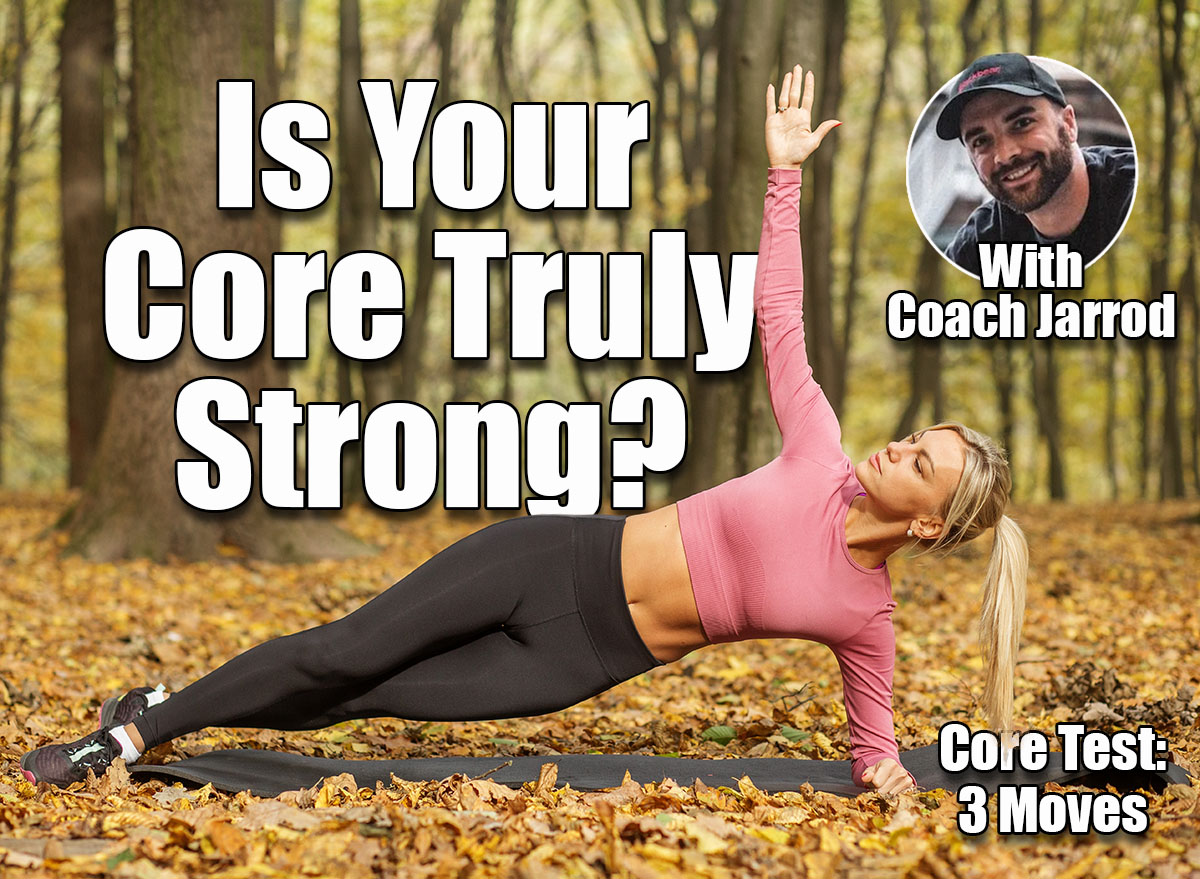
When most people think of core workouts, they picture endless crunches and sit-ups. However, true core strength extends far beyond six-pack aesthetics, focusing on total-body control, stability, and strength. If your goal is to build a resilient, functional core, crunches alone won’t cut it.
Instead, the best tests of core strength are movements that challenge your body to resist movement, stabilize under load, and maintain position under tension. These three no-crunch moves do precisely that, pushing your abs, obliques, and deep core stabilizers to the limit. In many ways, they’re more effective and honest assessments of your core strength than classic ab routines.
So, can you pass the “Strong Core” test? Try these three moves and see how you stack up.
Move #1: Plank Pull-Through
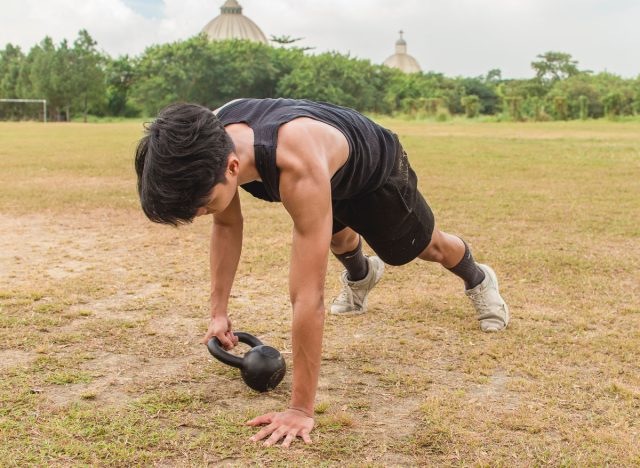
This deceptively simple move engages your entire core, especially your transverse abdominis, by requiring you to stay tight and still while shifting your weight. Unlike crunches, which primarily engage the rectus abdominis through spinal flexion, the plank pull-through requires anti-rotation and full-body stability, particularly from your deep core and obliques.
Muscles Trained: Transverse abdominis, obliques, rectus abdominis, glutes, shoulders
How to Do It:
- Start in a high plank position with your hands under your shoulders and your feet slightly wider than hip-width apart.
- Place a dumbbell or similar object just outside your left hand.
- Without shifting your hips, reach your right hand across your body to grab the dumbbell.
- Drag it across the floor to the right side of your body.
- Return your hand to the floor and repeat with the other hand.
- Keep your body as still as possible during the pull-through.
What’s a Passing Score?: Complete 10 slow and controlled reps (5 each side) without rocking your hips side to side.
Pro Tip: Squeeze your glutes and brace your abs hard before each pull to stay rock-solid.
Move #2: Side Plank Hold
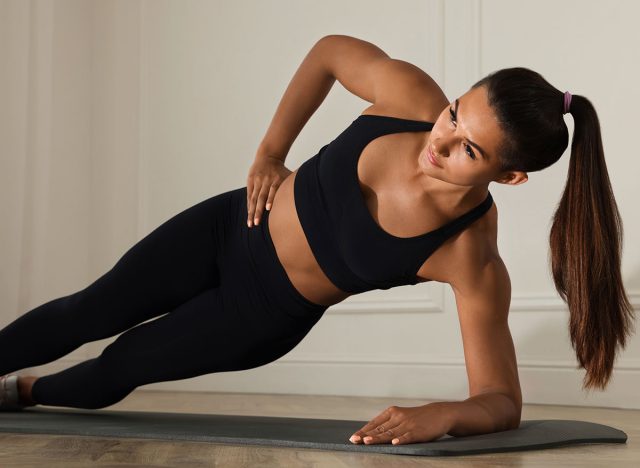
The side plank hold isolates and tests your lateral core strength, something crunches don’t quite hit. It challenges your ability to stabilize your spine and maintain alignment using your obliques and glutes. It’s also a great way to spot strength imbalances between your left and right sides.
Muscles Trained: Obliques, glute medius, transverse abdominis, quadratus lumborum
How to Do It:
- Lie on your side with your forearm on the ground, elbow under your shoulder.
- Stack your feet or stagger them for better balance.
- Lift your hips off the ground, forming a straight line from your head to your heels.
- Keep your top shoulder stacked over the bottom shoulder, and avoid letting your hips sag.
- Hold the position.
What’s a Passing Score?: Hold for 45 seconds per side with perfect form and no sagging.
Pro Tip: Press your bottom elbow firmly into the floor and squeeze your glutes to lock in position.
Move #3: One-Arm Plank Hold
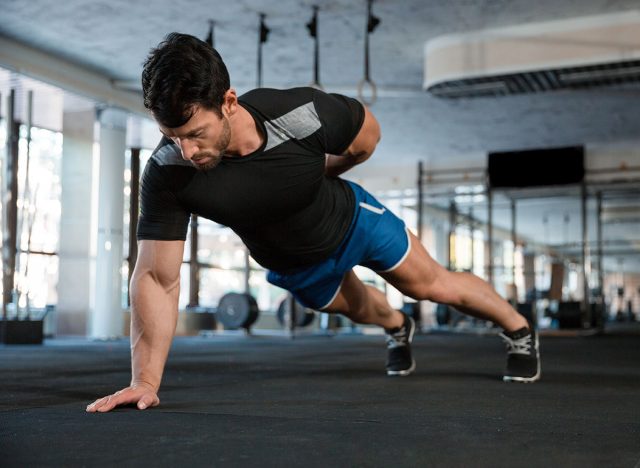
This move takes a standard plank and adds a brutal anti-rotation challenge. Lifting one arm forces your core to work overtime to keep your hips square and prevent your torso from twisting. It’s an actual test of functional core strength and control.
Muscles Trained: Rectus abdominis, obliques, transverse abdominis, shoulders, glutes
How to Do It:
- Start in a high plank with feet slightly wider than usual for balance.
- Lift one hand off the ground and place it behind your back or extend it forward.
- Keep your hips square and avoid twisting or tilting.
- Hold for time, then switch arms.
What’s a Passing Score?: Hold for 30 seconds per side without hips twisting or sagging.
Pro Tip: Actively press the supporting hand into the floor and grip the ground to stabilize your shoulder.
How to Improve Your Core Strength to Pass
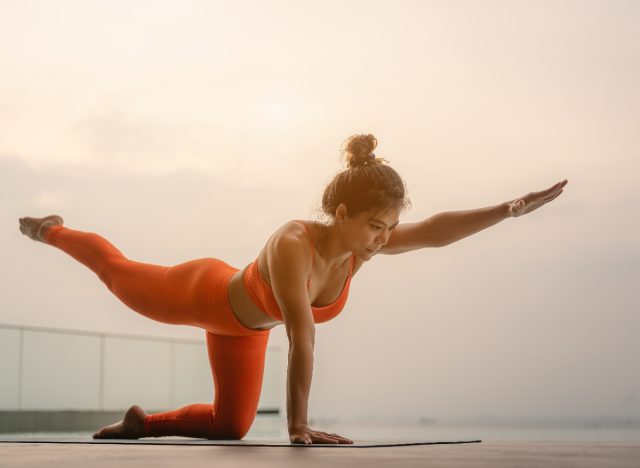
Not quite there yet? No worries! Building true core strength takes time and consistency. Here’s how to improve:
- Train anti-rotation: Add exercises like bird dogs, dead bugs, and Pallof presses to your routine.
- Build from the basics: Master standard planks and side planks before progressing.
- Use tempo: Slow down your reps to increase time under tension and improve control.
- Train your glutes: Strong glutes support a strong core. Include hip thrusts, glute bridges, and band walks to strengthen them.
- Stay consistent: Core strength develops through repetition and gradual progression over time.